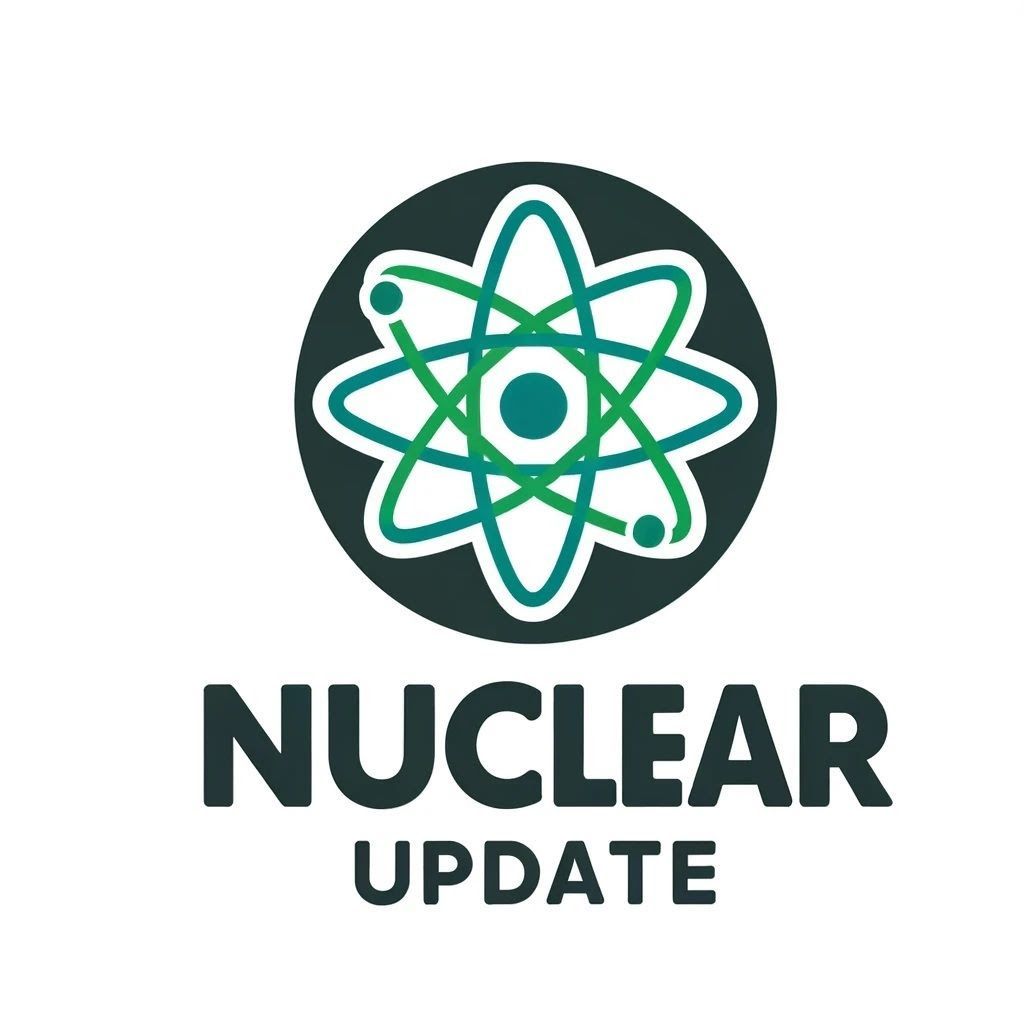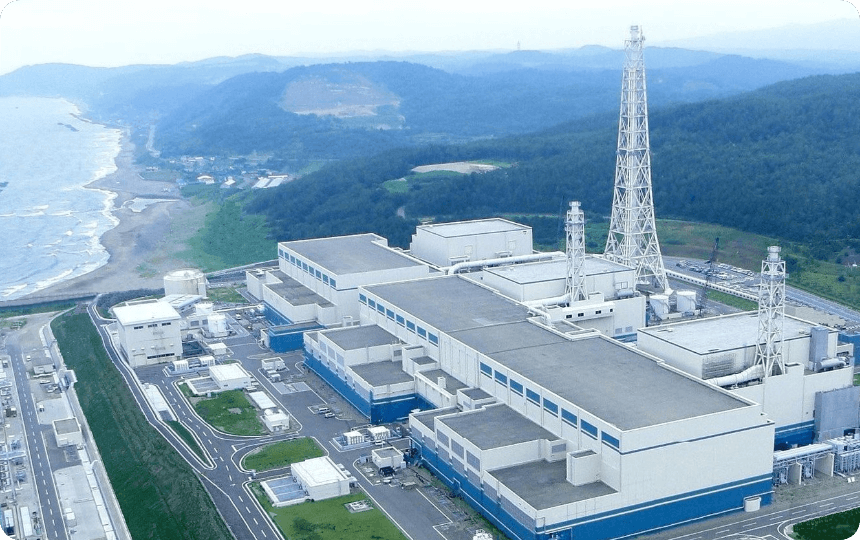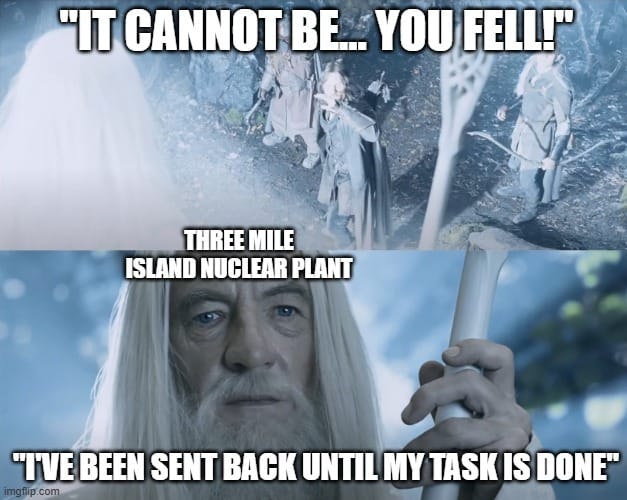- Nuclear Update
- Posts
- ⚛️World’s Largest Nuclear Plant to Restart
⚛️World’s Largest Nuclear Plant to Restart
PLUS: Nuclear Sits at the Center of the $1 Trillion U.S.–Saudi Deal

Welcome to Nuclear Update!
This week, there are more nuclear reactors approved for restart in Japan, than there are stars in the entire solar system.
This is what I’ve got for you this week:
⚛️World’s Largest Nuclear Plant to Restart
🚀Nuclear Sits at the Center of the $1 Trillion U.S.–Saudi Deal
🥳Three Mile Island Gets a $1 Billion Restart Boost
⚡Radioactive Anti-Static Magic
But first: this week’s trivia question:
In the nuclear world, what does the acronym NORM stand for? |
Last week, I asked: Why do some nuclear reactors give off that eerie blue glow (Cherenkov radiation)?
You said:
🟨⬜️⬜️⬜️⬜️⬜️ Hot water starting to fluoresce (19%)
🟩🟩🟩🟩🟩🟩 Electrons outrunning the speed of light in water (58%)
⬜️⬜️⬜️⬜️⬜️⬜️ Special blue LEDs for safety crews (2%)
🟨🟨⬜️⬜️⬜️⬜️ Steam scattering photons (21%)
Now, let’s dive into the good stuff!💥

⚛️World’s Largest Nuclear Plant to Restart
Japan just took its biggest nuclear step in over a decade, and it is a monster (not the Pokémon kind).
Niigata’s governor has officially approved the restart of Kashiwazaki-Kariwa Units 6 and 7, the two largest boiling water reactors in the country and part of the world’s biggest nuclear power plant, an 8.2 GW behemoth that has been sitting idle since Fukushima.
With the governor’s approval secured and the prefectural assembly vote next month little more than a box-checking exercise, Unit 6 is now on track to produce power as early as March 2026.
And the timing could not be more deliberate. Japan’s new prime minister, Sanae Takaichi, is openly pro-nuclear and wants the country’s idle fleet back in service to cut LNG imports, stabilize electricity prices, and strengthen the grid. Kashiwazaki-Kariwa does all three at once.

Kashiwazaki-Kariwa Nuclear Power Plant, Units 5, 6, and 7
Unit 6 alone could displace 1 million tonnes of LNG demand next year, and the restart could boost TEPCO’s annual profit by $600 million. It’s hard to argue against that kind of financial and environmental incentive.
The reactors themselves are impressive. Units 6 and 7 are 1,356 MW Advanced Boiling Water Reactors, among the newest in Japan’s fleet. TEPCO completed fuel loading and final checks at Unit 6 in October, confirming the main systems are ready for startup.
All that was missing was political approval. Now they have it. And the best part? Japan’s nuclear reboot is nowhere near finished.
Japan has restarted 14 reactors since launching its post-Fukushima safety regime. If these two come online, the country will be operating 13 GW of nuclear capacity again, a major shift for an economy that used to run 54 commercial reactors and now spends heavily on imported gas.

Nuclear Sits at the Center of the $1 Trillion U.S.–Saudi Deal
The biggest energy deal of the decade just dropped, and at the center of the $1 trillion deal covering AI, defense, and technology is nuclear energy.
Washington and Riyadh have completed negotiations on a long-sought nuclear technology-sharing framework, the precursor to a full 123 Agreement that would allow American companies to build reactors in the kingdom.
A 123 Agreement is the legal foundation the U.S uses to export nuclear reactors, fuel, and services. No 123 Agreement, no American nuclear tech.
These agreements normally come with strict non-proliferation rules, and Saudi enrichment has been the red line holding things up for more than a decade. This new framework excludes any enrichment rights, removing the single biggest obstacle that has stalled U.S.–Saudi nuclear cooperation for years.
The implications for U.S nuclear companies cannot be overstated. Saudi Arabia wants to build at least 2 large PWRs at the new Duwaiheen site by 2030 and has long-term plans for 20 GW of nuclear capacity by 2040.
Until now, Korea’s APR-1400 was seen as the frontrunner, but Riyadh deliberately delayed awarding the project until the U.S could join the conversation. That is… telling.
With negotiations complete, Westinghouse, Bechtel, Holtec, and the broader U.S supply chain are suddenly positioned to win one of the largest reactor tenders in the world.
Saudi Arabia wants reactors, and this deal gives it access to U.S. technology, engineering expertise, and fuel-cycle integration. In return, the U.S. keeps Riyadh aligned with Western suppliers rather than Beijing or Moscow.
A U.S.–Saudi nuclear buildout doesn’t just mean reactors. It means long-term fuel contracts, conversion and enrichment partnerships, and Western fuel-cycle dependencies that last half a century.
Think of it this way: when a country buys an AP1000, an APR-1400 or a Nuscale SMR, they also buy 60 to 80 years of uranium mining, conversion, enrichment, fabrication and servicing. Nuclear isn’t a one-off construction project. It is a supply-chain marriage.
If you want to see just how big this agreement really is, here’s Fox News coverage of the $1 trillion agreement, with nuclear called out as a core pillar:

🥳Three Mile Island Gets a $1 Billion Restart Boost
The most infamous nuclear site in U.S. history is getting a second life.
The Trump administration has approved a $1 billion federal loan to restart Three Mile Island Unit 1, the 835 MW PWR reactor that shut down in 2019.
The plant is now being revived and renamed (rebranded?) as the Crane Clean Energy Center.
Energy Secretary Chris Wright said the loan will help “ensure America has the energy it needs to grow its domestic manufacturing base and win the AI race.”
And here’s a first: this is the first time the DOE Loan Programs Office (LPO) has ever issued and closed a billion-dollar nuclear loan on the same day. Translation, the nuclear lending pipeline is wide open.
The LPO has more than $250 billion available, and as earlier reported a large portion is to go directly to large-scale reactor deployments and restarts.
Once online, the reactor will deliver steady baseload to Microsoft’s AI campuses under a long-term supply deal. It is one of the clearest signs yet that tech companies are turning to nuclear not for PR points, but because nothing else can feed their 24/7 power hunger.
And as I keep telling anyone within earshot, restarting dormant reactors is the fastest and cheapest way to add real baseload back to the grid (and fastest way to add uranium demand 😉).
Just look at this moment from last week, where Energy Secretary Wright stunned the Fox News anchor with how quickly the U.S. is moving on nuclear (at 3:06):
Wright: “We have another nuclear power plant we're restarting in southwestern, Michigan...will actually be on early next year.”
Host: "That's a fast timeline! I was expecting...like 10 years!"

🚀 The Fast Part of the Cycle Is Starting
Massive deals, massive restarts, and even more massive implications, the next few months are going to move fast.
If you want to position yourself before the crowd catches on, join Nuclear Update Premium.👇

🎞️ How To Destroy The Sun
Are you a supervillain looking to destroy the Sun? Or just curious about the theoretical physics behind such an absolutely terrible idea?
Either way, this clip has you covered:

⚡Radioactive Anti-Static Magic
Welcome back to Atomic Alternatives, where we explore the strange, clever, and occasionally ridiculous ways nuclear science sneaks into everyday life.
This week we’re diving into a nuclear technology you’ve benefited from a thousand times, even if you never knew it existed: static eliminators in printing and packaging.
Yes, the same industry that fills your mailbox with glossy flyers and wraps basically everything in plastic uses radioactive isotopes to stop their machines from shocking themselves to death.
Most high-speed printing and packaging lines build up insane amounts of static electricity. Paper rushing through rollers at 20+ meters per second, plastic film unspooling at high tension, cardboard sliding over metal guides, it’s a static nightmare.
And static isn’t just annoying, it’s dangerous. It causes dust attraction, smudged ink, misaligned labels, jams, sparks, and in some cases… fires.
So the industry found a delightfully nuclear solution.
They use polonium-210 and krypton-85 static eliminators.
These devices emit a tiny, ultra-low-level stream of ionizing radiation that knocks electrons off nearby air molecules, instantly neutralizing the static charge on passing material.
No zap, no dust cling, no ruined print runs. Just smooth, perfect sheets of paper flying through the machine like they’re on rails.
You’ve almost certainly held something that ran through one of these devices. Your cereal box? Probably. The foil on your chocolate bar? Definitely. That Amazon mailer you ripped open yesterday? Almost guaranteed.
The devices are sealed, safe, and tightly regulated, but they’re a perfect example of how nuclear tech quietly keeps entire industries running without most people ever noticing. ⚛️

😂Meme of The Week

Thanks for reading!
Until next time: stay charged, stay critical (like a reactor), and keep glowing 😎
— Fredrik
Want to support Nuclear Energy? Join Nuclear Update Premium.
💪Review of the Week

What did you think of this week's email? |
DISCLAIMER: None of this is financial advice. This newsletter is strictly educational and is not investment advice or a solicitation to buy or sell any assets or to make any financial decisions. Please be careful and do your own research
Reply